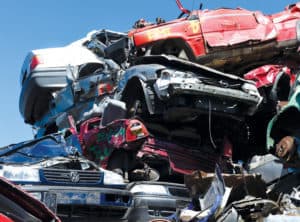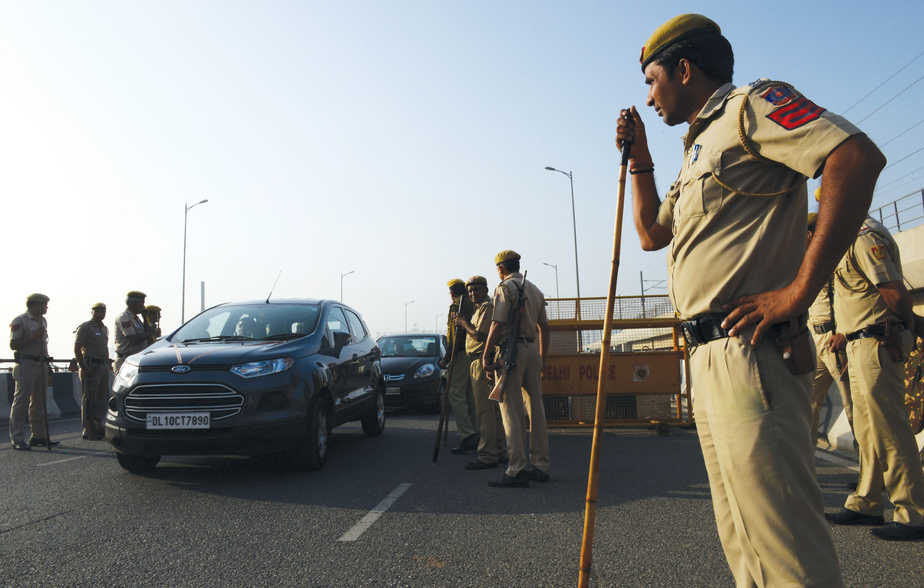From the 37 lakh that are more than 15 years old, only 90 have been nabbed by the Transport Department. they will be sent off to the scrapping yard run by MSTC
Helpless to prevent farmers of neighbouring states from burning stubble, the government has exerted its muscle power on motorists: it is removing old cars from Delhi’s streets and turning them into scrap. Perhaps one way to counter the magnified effects of air pollution during autumn through winter months.
Figures provided by the Transport Department shows that the drive which started in all seriousness on October 5 has seen 90, 15-year-old vehicles impounded up to October 16. The department has also strengthened its enforcement squad, adding 39 of newly joined head constables. There are also 27 newly procured enforcement vehicles which will be deployed soon.
Earlier, there were only threats, and hints that the Delhi Scrapping of Vehicles Rules, 2018 would be implemented only in 2019. But low and behold, owners who wanted to stretch out their beloved old car’s life a little longer have found themselves caught. So far, the targeted vehicles are only diesel ones — owners of petrol and CNG vehicles can breathe a sigh of relief. These cars will, however, be challaned.
South Delhi residents better watch out, as the Transport Department has started its lookout in this region, at least according to Delhi’s Transport Minister Kailash Gahlot. He had warned that all diesel vehicles over the age of 15 years that were being driven or even parked in public spaces would be seized. “For other vehicles, our enforcement teams have been directed to intensify checking of PUC certificates and impound visibly polluting vehicles until Diwali”.
While sceptics question how helpful such a step would be towards making the air of the capital less dangerous, a study released in August by Centre for Science and Environment (CSE) shows that even this measure would be of some consequence.
In its study “The Urban Commute and How it Contributed to Pollution and Energy Consumption”, CSE found Delhi ranked the worst in terms of vehicular emissions among 14 cities of India.

And this was, it said, despite the average trip length and public transport share being better than other megacities. It pointed to the high volume of vehicles and higher population compounding high pollution levels.
There was even a study in 2016 by IIT-Kanpur which had found that vehicular emissions contributed to around 9% of the PM10 load in Delhi and around 20%of the PM2.5 load. And we have a stupendous number of vehicles to contribute to this — over one crore registered vehicles and out of that at least 37 lakh that are older than 15 years.
Hence, this move may in effect contribute well in making the city more liveable while also requiring much more to save it. Some car owners, though, whose cars have almost reached the cutoff threshold are not buying this argument. Some believe it’s a way for companies to benefit especially as they maintain their cars well. But the Society of Indian Automobile Manufacturers (SIAM) wants further action —that is, to see a full ban on all vehicles older than 15 years across India.
Classic and vintage car owners, however, do not come under this category. In 2017, the National Green Tribunal had exempted vintage and classic cars permanently from its ban. The earlier judgement in 2014 had affected even these vehicles, but after much effort, the court considered the owners’ sentiments and the reality that they had historical value.
The tribunal referred to the Rule 92 (2)(c) of Central Motor Vehicles Rules, 1989 and Section 59 of the Motor Vehicles Act, 1988 to grant an exemption to “antique/vintage” vehicles.
The Delhi-NCR region has thousands of vintage and classic vehicles which come out of their garages and into the streets during rallies, exhibitions and for maintenance runs. A classic car is defined as an automobile manufactured between 1940 and 1970 and a vintage car is one manufactured between 1919 and 1930.
Unfortunately, Maruti 800, a car that changed the automotive industry in the country and the middle class, started its manufacture and sale in 1983, so it doesn’t make the cut. Anyone who has managed to keep the car plying would have to part ways sooner rather than later — as of now however, only diesel cars are being targeted.
But those diesel vehicles which are parked in public spaces or abandoned in public spaces will be impounded and will never be released to the owner. The registered owner will get the scrap value of the car. The state-run MSTC Limited will be doing the scrapping, as per the current plans. The state-owned company has tied up with a scrapping unit and turns vehicles into pulp at a site in Greater Noida.
An official with the Transport Department said that many persons were also resorting to take the vehicles themselves to a scrap yard in Mayapuri.
According to the rules, owners can also willingly give away old cars and two-wheelers to empanelled scrap dealers against an assured amount. They can, alternatively, sell the vehicles outside the city, in states where the rule banning diesel vehicles older than 15 years does not apply.





